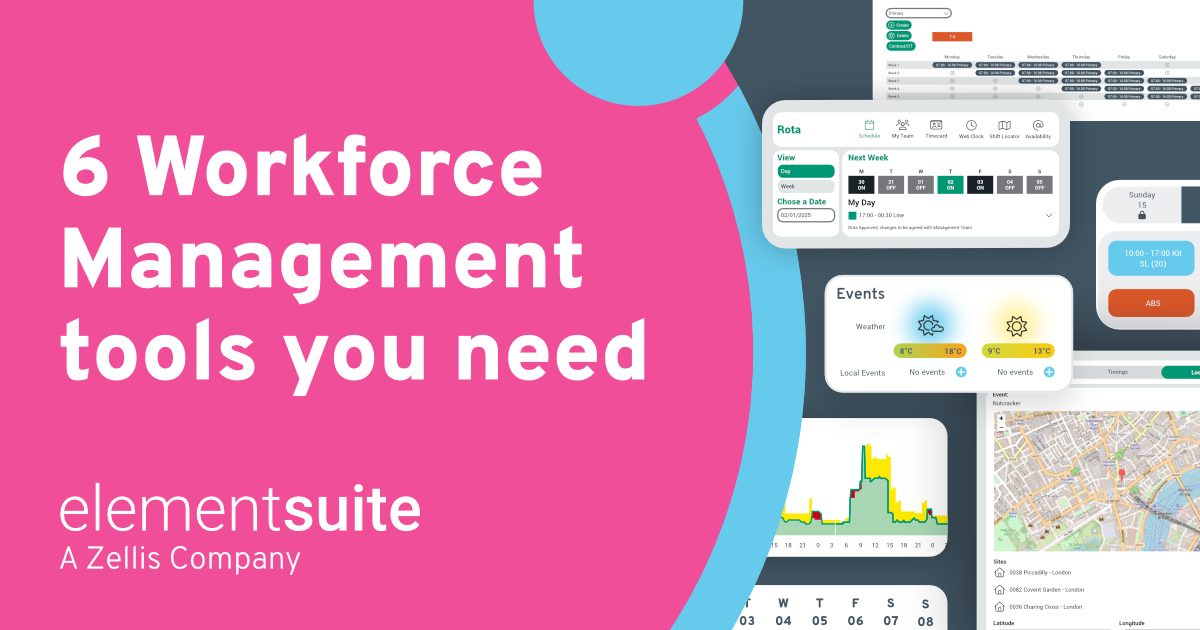The holiday season is often referred to as the most “wonderful time of the year” for retail and hospitality businesses. It’s a time when revenue margins skyrocket, customers flock to stores, and diners fill up restaurants.
But this increase in demand comes with a logistical HR nightmare if businesses fail to manage their seasonal staff scheduling effectively (I know the majority of you reading will be well aware of this).
Seasonal staff tend to be the working clog that keeps the machines ticking during busy holidays. They help keep queues and waiting times down, boost the quality of customer service, and, of course, bring in more revenue for businesses. However, without proper planning and execution, seasonal staff scheduling we know all too well that it can quickly become a hindrance rather than a benefit (can I hear a ba-humbug?).
Underestimation of staff scheduling needs
One common mistake that businesses make is underestimating their staff scheduling needs. This often results in overworking current employees and hiring more staff than necessary, leading to increased costs.
To avoid this, accurately forecast your needs and plan effectively for the holiday season.
Do you know how many staff members are needed per shift? Are there any particular days or hours that require more employees? Have you factored in the extended hours during the holiday season? These are all essential questions to consider when creating a staff schedule.
From previous holiday seasons’ trends to current sales figures and customer foot traffic, data can provide valuable insights into staffing needs and help create a more efficient schedule.
For instance, if a store knows that they typically see a 30% increase in foot traffic on Black Friday, they can schedule more staff during those hours to avoid long wait times and disgruntled customers.
And by integrating external systems such as booking or sales tracking applications with your workforce management software, businesses can take advantage of predictive modelling and forecasting tools to accurately determine staff requirements for each shift and better understand your seasonal staffing needs for the upcoming holiday season.
Inflexible schedule system
According to a report from the Society for Human Resource Management (SHRM), 31% of HR professionals stated that limited flexibility in hours and location created challenges for finding and retaining talent. The same report also noted that 45% of HR professionals lack of flexibility as a challenge in traditional, in-person organisations.
In today’s society, flexibility is no longer a perk but an expectation for many employees. People want more flexibility in their lives. However, in in-person businesses such as retail and hospitality, this can be challenging to accommodate – it’s not like you can offer your frontline sales workers a work-from-home position.
It is simple. By leveraging cloud-based, mobile-friendly workforce planning software, you can offer your staff more flexibility in terms of shift swaps, time-off requests, and upcoming availability.
Your permanent and seasonal staff won’t have to run around the store or make endless phone calls to find someone to cover their shift. Instead, they can easily request time off and manage their schedules with just a few clicks on their mobile-friendly app.
This not only makes the scheduling process more manageable but also demonstrates that you value your employees’ work-life balance, empowering them to perform at their best during the busy holiday season.
Poor communication on changes
It goes without saying that communication for any business is crucial. It is what connects employees to management and, ultimately, ensures that everyone is on the same page. However, effective communication can often be overlooked during the chaotic holiday season.
With last-minute changes in shift schedules, important announcements, or updates to company policies, it is essential to have a reliable communication system in place. This could be through email, a messaging platform such as Slack or Microsoft Teams, or even better – an internal communications platform integrated into your workforce management system.
With alerts and notifications sent directly to employees’ devices, everyone can stay informed and up-to-date on any changes, avoiding confusion or missed shifts. You can even set up automated reminders for upcoming shifts, helping your staff stay on top of their schedules. You can even create communication groups for specific teams or departments, making it easier to share information and updates with the right people.
Ultimately, the key to successful staff scheduling during the holiday season is effective communication. By ensuring that everyone is on the same page, businesses can avoid costly mistakes and keep operations running smoothly.
Failure to plan for contingency
During the holiday season, without a doubt, there will be more employees calling in sick, booking time off, or facing other unexpected circumstances that may impact their availability. But no matter what may come, businesses must be prepared for contingencies to ensure that operations continue as normal.
One of the best ways to plan for these situations is to have a B-team or substitutes in place who can be called in to cover shifts when needed. This could include past employees who are willing to work during the holiday season or temporary, seasonal workers explicitly hired for this purpose.
This can help immensely reduce stress and pressure on current employees while covering all shifts. And while referring to these employees as a “B-team”, they should still be trained and prepared to provide the same level of service as your regular staff.
Add their skills, qualifications, and competencies to your workforce management system to ensure they are assigned to the right shifts and have the necessary skills to handle any task. Having a contingency plan in place will not only help during busy holiday periods but also create a sense of security and support for your employees.
Conclusion
In conclusion, successful seasonal staff scheduling during the holiday season requires careful workforce planning, effective communication, flexibility, and data utilisation. By using technology, data, and proper contingency planning, businesses can avoid common pitfalls and create a more efficient schedule for their seasonal staff.
So, this holiday season, let’s ensure we are well-equipped to handle the increased demand and provide a positive experience for our customers and employees. With the right approach, seasonal staff can drive a successful holiday season for any business.
Let’s take the first step together. Book a demo with us today and discover how our comprehensive workforce planning software can help you overcome scheduling challenges, enhance flexibility, and lead your team to success in the upcoming holiday season.




